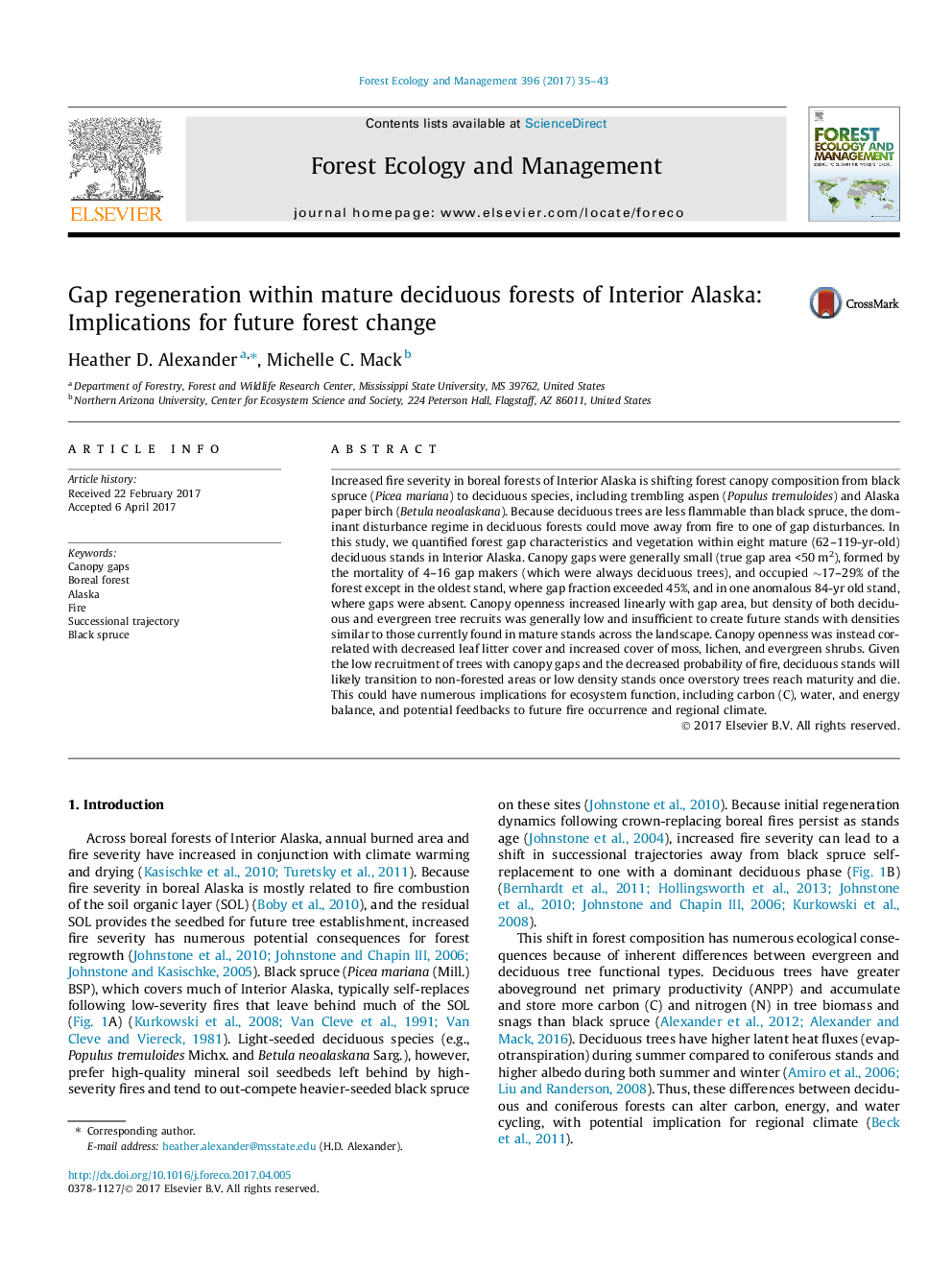| کد مقاله | کد نشریه | سال انتشار | مقاله انگلیسی | نسخه تمام متن |
|---|---|---|---|---|
| 4759414 | 1421362 | 2017 | 9 صفحه PDF | دانلود رایگان |
عنوان انگلیسی مقاله ISI
Gap regeneration within mature deciduous forests of Interior Alaska: Implications for future forest change
ترجمه فارسی عنوان
بازسازی شکاف در جنگلهای بلوغ بالغ در آلاسکا: تاثیرات برای تغییر جنگل های آینده
دانلود مقاله + سفارش ترجمه
دانلود مقاله ISI انگلیسی
رایگان برای ایرانیان
کلمات کلیدی
فاصله کاناپه، جنگل نابالغ، آلاسکا، آتش، مسیر اجباری، صنوبر سیاه،
موضوعات مرتبط
علوم زیستی و بیوفناوری
علوم کشاورزی و بیولوژیک
بوم شناسی، تکامل، رفتار و سامانه شناسی
چکیده انگلیسی
Increased fire severity in boreal forests of Interior Alaska is shifting forest canopy composition from black spruce (Picea mariana) to deciduous species, including trembling aspen (Populus tremuloides) and Alaska paper birch (Betula neoalaskana). Because deciduous trees are less flammable than black spruce, the dominant disturbance regime in deciduous forests could move away from fire to one of gap disturbances. In this study, we quantified forest gap characteristics and vegetation within eight mature (62-119-yr-old) deciduous stands in Interior Alaska. Canopy gaps were generally small (true gap area <50Â m2), formed by the mortality of 4-16 gap makers (which were always deciduous trees), and occupied â¼17-29% of the forest except in the oldest stand, where gap fraction exceeded 45%, and in one anomalous 84-yr old stand, where gaps were absent. Canopy openness increased linearly with gap area, but density of both deciduous and evergreen tree recruits was generally low and insufficient to create future stands with densities similar to those currently found in mature stands across the landscape. Canopy openness was instead correlated with decreased leaf litter cover and increased cover of moss, lichen, and evergreen shrubs. Given the low recruitment of trees with canopy gaps and the decreased probability of fire, deciduous stands will likely transition to non-forested areas or low density stands once overstory trees reach maturity and die. This could have numerous implications for ecosystem function, including carbon (C), water, and energy balance, and potential feedbacks to future fire occurrence and regional climate.
ناشر
Database: Elsevier - ScienceDirect (ساینس دایرکت)
Journal: Forest Ecology and Management - Volume 396, 15 July 2017, Pages 35-43
Journal: Forest Ecology and Management - Volume 396, 15 July 2017, Pages 35-43
نویسندگان
Heather D. Alexander, Michelle C. Mack,
